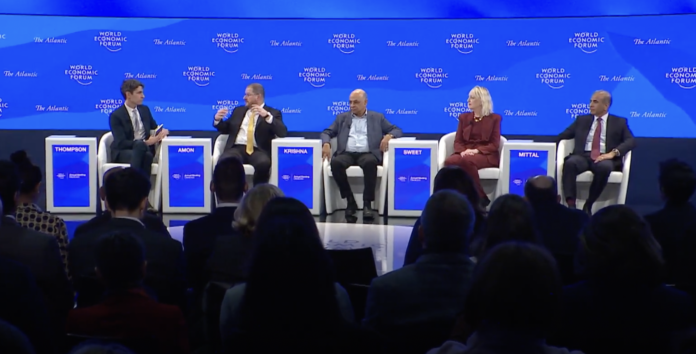Qualcomm CEO: “The technology you find today in your phone, you can simply think about this future where every other device can have the same technology”
Joining business and government leaders at the World Economic Forum Annual Meeting in Davos, Switzerland, Qualcomm CEO Cristiano Amon this week discussed mega-trends in technology and highlighted how the company fits into this future. Amon specifically called out Qualcomm’s investments in augmented and virtual reality and automotive technologies, both key parts of the firm’s larger diversification strategy.
Big picture, Amon said, “Digital transformation becomes a necessity for…companies to be competitive in our future digital economy…When we talk about the current economic environment, we see that there is this desire of companies to digitally transform and use technology to become more efficient, to become more productive. I do believe that we’re actually seeing right now an incredible demand for things to become more intelligent, to become more connected.”
Qualcomm’s one technology roadmap is a holistic plan for the company to grow its total addressable market to $700 billion by the end of the decade. The vision is to leverage foundational technology elements initially developed for mobile handsets and apply them to high-growth areas, including AR/VR, automotive, the internet of things and PCs.
To the AR/VR aspect, Amon remains bullish that intelligent, connected glasses will be the next “evolution of computing platforms.” He traced the history of PCs and mobile devices, and pointed out that next-generation PCs look more like mobile devices and that the primary use case for a PC has become video telephony for enterprise collaboration. “You have today an incredible amount of processing power in your phone…but you’re limited by the size of the screen. But it’s an artificial limitation.”
Amon continued to pull this thread, adding that AR/VR glasses will realize holographic telephony as part of a larger move toward merging physical and digital spaces. “That’s going to happen,” he said. “I think that’s going to be the next computing platform and eventually it’s going to be as big as phones.”
WEF comes hot on the heels of CES where Qualcomm focused its demonstrations and discussions on its fast-growing automotive business which spans in-vehicle and car-to-cloud connectivity, automated driver assistance systems, and digital cockpits. That’s all wrapped up in the Snapdragon Digital Chassis portfolio that has been widely adopted by nearly every major automotive OEM on the planet.
Amon laid out the architectural evolution of vehicles from combustion engines to electrification and digitalization. He encouraged conference attendees to think about a vehicle as a platform for the distribution of content and services predicated on connectivity which fundamentally alters the relationship between vehicle owner and car manufacturer.
With regard to the development of increasingly autonomous driving, Amon touched on a key point around ADAS-related safety features needing to be democratically applied across vehicle price points just like antilock braking systems and airbags.
In terms of full self-driving vehicles, Amon said you’re seeing it today with smaller delivery vehicles deployed on various campus-type environments and in low-speed settings. “Eventually you’re going to get to fully autonomous but it’s really going to take time, especially because when you’re talking bout safety of people, humans make mistakes but enterprises can’t make mistakes.” He suggested that the path from 0% to 95% autonomous driving is clear, but that last 5% will be a bigger step to climb.
Asked how the world of his grandchildren would be profoundly different from the world of today, Amon reflected on how Qualcomm has been involved in the development of every generation of wireless technology and called the smartphone “the largest development platform created by mankind. The future is very bight because of technology…The world is a smaller place right now than it used to be…There’s this huge potential and that’s what actually drives the diversification of our business…The technology you find today in your phone, you can simply think about this future where every other device can have the same technology.”

